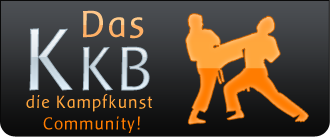Michael Tang veröffentlichte am Montag, den 10.04.2017 04:14
UTC+01:00 folgenden Text:
14. 雙功 - 椿拳 Sheung Kung - Chong Kuen
While the 永春拳 [ Weng Chun Kuen handform ] itself is the fundamental and foundation set, it has its limitations. It concentrates on training of hand forms, it does not provide with essential training on footwork, nor movement and stretching which is essential for building up body co-ordination. Such stretching and holistic body co-ordination is particularly important for young learners.
Knowing such limitations, Tang Yik actually introduced me to learn from two of his friends. He initially introduced me to learn from 邵漢生 [ Siu Hon Sang ], a master in Lo Han Fist - 羅漢拳, but for financial reasons, that did not happen. After I graduated, Tang Yik also introduced me to learn White Crane (northern style) and Pat Gua Pole, from Master Chan Yiu. Apart from knowing more, the northern style did provided a better development of the body. He also asked Kwong Chak Cheung SiHing to teach me 翻子拳 [ Faan Zi Kuen ], part of the Eagle Claw system.
On the other hand, Sheung Kung in the Tang family curriculum did provide a solution, although it is not perfectly good to fill up the gap. There are little references on the 雙功 [ Sheung Kung, Double Result ] and some people said it is 雙攻 ( Double Attack). I like to use 雙功 as it better represented to theory of Weng Chun, a self-rescue counter attack form rather than aggressive attack and 雙功 meant training on two aspects, hand forms and footwork. As Tang Yik agreed with Chu Chung Man to use Chong Kuen as the authentic forms, as such he rarely taught Sheung Kung. On the other hand, Tang Yik did provided us with two sets of videos showing the Sheung Kung, one much earlier and another just before he retired back to his home town.
One point to note is the footwork and Tang Yik said it was called 二換步 [ Ji Wun Bo ] - Double Rotate steps.
As told be Tang Yik, when Fung Siu Ching noted that Tang Suen and Tang Pok has the Sheung Kung, he loved the form, but as a Sifu already teaching publicly, he could not asked to learn such. However, he smartly based on the Sheung Kung and the Wooden Dummy and created the Chong Kuen (Tang Yik called it New Chong Kuen). One can see part of the Chong Kuen resembles the Sheung Kung. I personally like the Chong Kuen more as it has a better and continuous flow and footwork is more aggressive. There are also much more holistic and fluent footwork, body and Kiu movements.
Quelle:
https://www.facebook.com/groups/1936...0214361889704/
Kapitel 15: http://www.kampfkunst-board.info/for...-dummy-183278/




 Mit Zitat antworten
Mit Zitat antworten